
A visit to Pohang – The City of Steel and Light
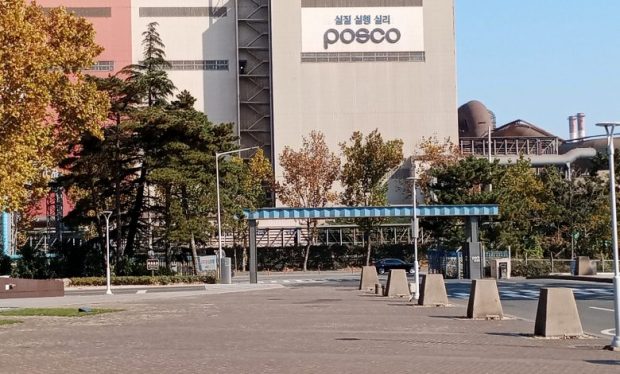
- POSCO, the South Korea’s first and one of the world’s largest steel-making company is based in coastal city Pohang, also known for its Lighthouses.
- In 1968, Pohang Iron and Steel Company was founded and its construction commenced in 1970. The devotion of workers was behind the successful completion of country’s first steel mill, as they even gave up enjoying their weekly off days to make the project a success.
By Nasir Aijaz,
AsiaN Representative
POHANG: On November 9, 2022 we, the members of the overseas Journalists’ group, were heading to Pohang, known as the city of steel and light. We had left the Busan a day after attending the AJA Forum on World Expo 2030.
Pohang was the port city having lighthouses and where South Korea’s first steel mill – Pohang Steel & Iron Company (POSCO), considered to be one of the largest steel-producing company, was founded in 1968. Our destination was the POSCO History Museum to have a glimpse of POSCO’s 54-year history.
On the way to Pohang, the coastal city in the province of North Gyeongsang, located at a distance of around 100km, I thought of the role of steel in the civilizations of the world. I had read somewhere that humans succeeded in manufacturing steel in 200 BC. And that in the ancient era, steel had fallen on the earth from heaven.
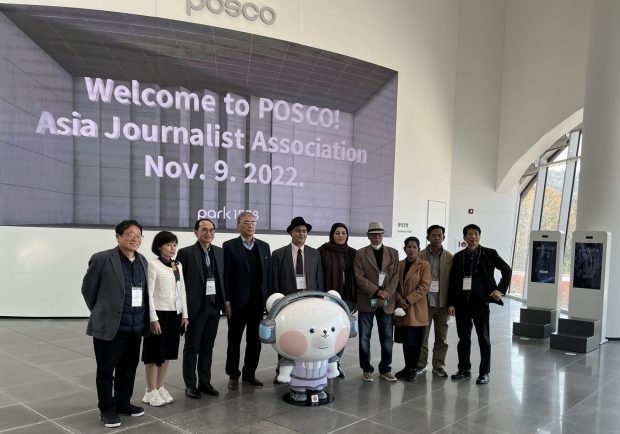 Photo: Sindh Courier/Joo-hyeong-Lee
Photo: Sindh Courier/Joo-hyeong-Lee
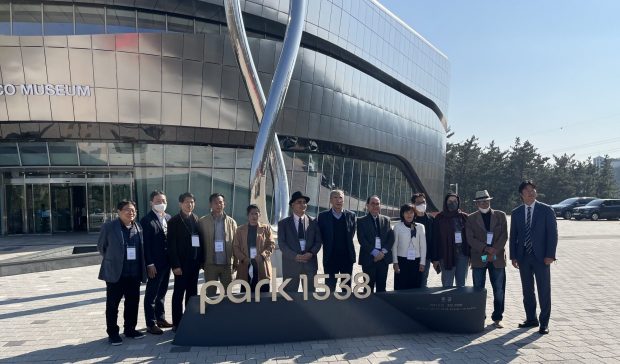
Taking benefit of android phone, I searched the history to refresh my knowledge how the steel had fallen from heaven.
“The history of steel begins from the stars. Billions of years back, before humans walked the Earth—before the Earth even existed—blazing stars fused atoms into iron and carbon. Over countless cosmic explosions and rebirths, these materials found their way into asteroids and other planetary bodies, which slammed into one another as the cosmic pot stirred. Eventually, some of that rock and metal formed the Earth, where it would shape the destiny of one particular species of walking ape,” I recalled what an author had elaborated.
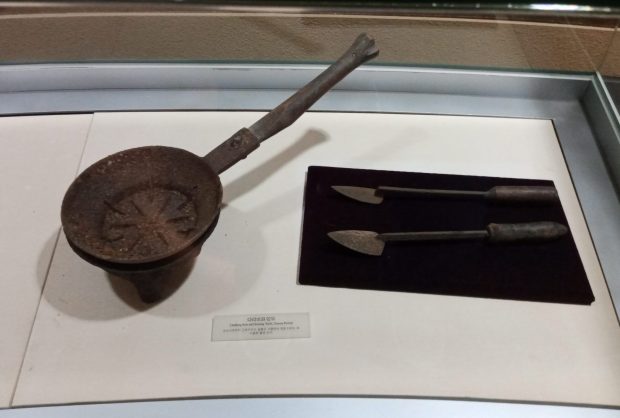
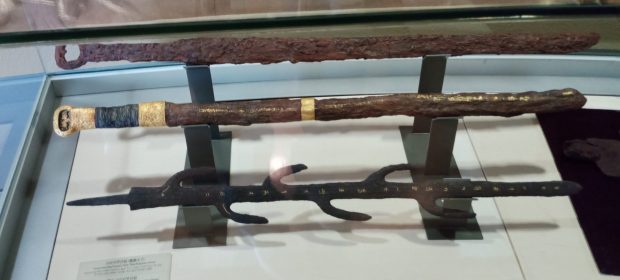
“On a day lost to history, some fortuitous humans found a glistening meteorite, mostly iron and nickel that had barreled through the atmosphere and crashed into the ground. Thus began an obsession that gripped the species. Over the millennia, our ancestors would work the material, discovering better ways to draw iron from the Earth itself and eventually to smelt it into steel. We’d fight over it, create and destroy nations with it, grow global economies by it, and use it to build some of the greatest inventions and structures the world has ever known,” author had viewed.
According to the author of article, King Tut, the Egyptian pharaoh, had a dagger made of iron—a treasured object in the ancient world worthy of few more than a pharaoh. When British archaeologist Howard Carter found Tutankhamun’s tomb nearly a century ago and laid eyes on this object, it was clear the dagger was special. What archaeologists didn’t know at the time was that the blade came from space.
Iron that comes from meteorites has a higher nickel content than iron dug up from the ground and smelted by humans. In the years since Carter’s big discovery, researchers have found that not only King Tut’s dagger but also virtually all iron goods dating to the Bronze Age were made from iron that fell from the sky.
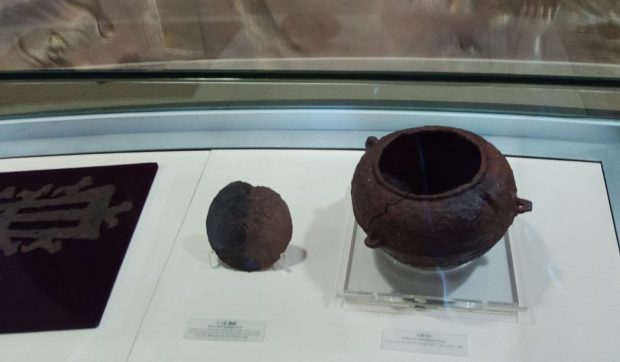
To our ancestors, this exotic alloy must have seemed like it was sent by entities beyond our understanding. The ancient Egyptians called it biz-n-pt. In Sumer, it was known as an-bar. Both translate to “metal from heaven.” The iron-nickel alloy was supple and easily hammered into shape without breaking. But there was an extremely limited supply, brought to Earth only by the occasional extraterrestrial delivery, making this metal of the gods more valuable than gems or gold.
I thought of the influence, the steel had on human lives and society. This material is used across the globe for a variety of purposes due to its functionality, adaptability, machinability and strength. Mankind would not exist successfully today if it weren’t for the development of steel. Steel is an instrumental material in the international progression of infrastructure, economy, transportation, sustainability, health and entertainment. In fact the steel had been one of the very essential components of civilization. Inventions of wheel, bridges, railways, aircrafts and several other such things were possible only because of the steel.
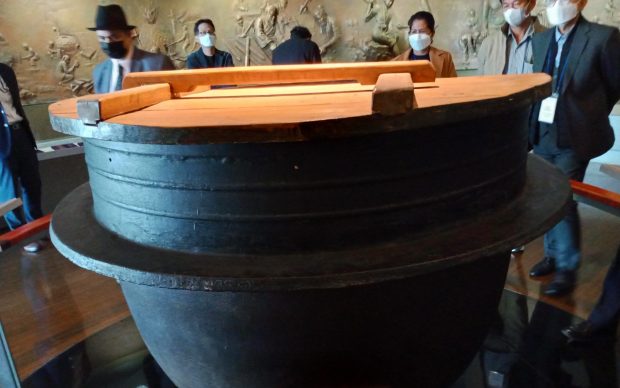
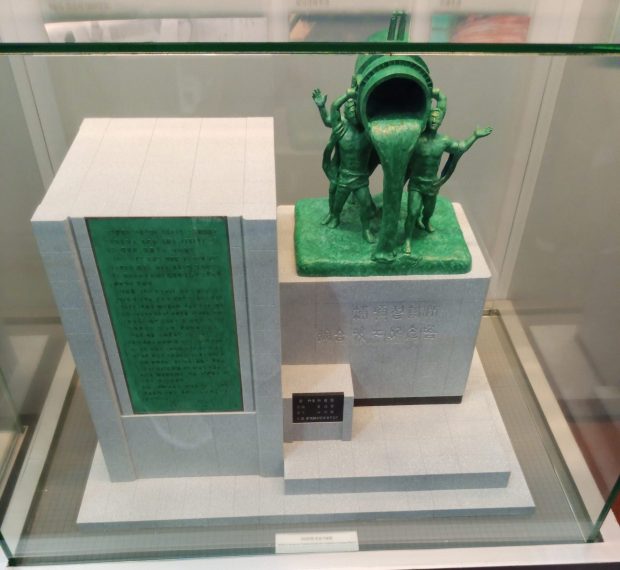
The Google surfing ended when our bus entered the main gate of POSCO History Museum, where the company officials were present to welcome the overseas journalists. A remarkably impressive building was in front of us with POSCO History Museum plaque prominently affixed above its entrance.
Next to the History Museum building, stood another gigantic building named as ‘Park1538’, located on a hill overlooking Pohang Steelworks. The Park1538, is a compound word of ‘Park’ and 1538℃, a melting point of pure steel, built as a cultural space to share POSCO’s past, present, and future with the public. Among some of the highlights of this eco-friendly space are the Waterside Park, POSCO History Museum, Hall of Honor, and the Sky Bridge.
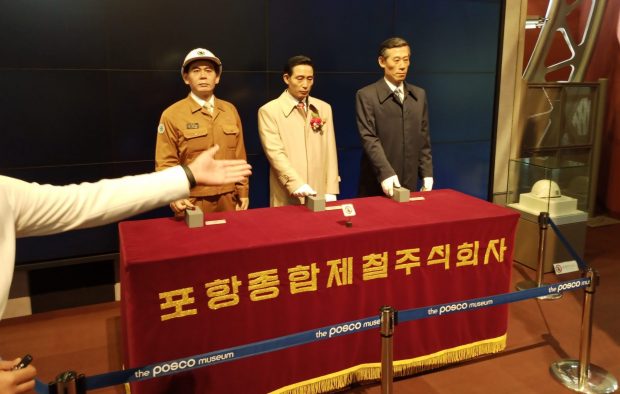
We started strolling various sections of POSCO History Museum, where a female guide briefed us in detail the story of POSCO from the day one the idea was conceived till date. During the briefing we continued strolling from one section to other having a look at various items and photographs showcased there. Even the office room used in the initial days along with typewriter and some furniture were preserved as the part of museum.
It was so great to see this huge body that was one of the milestones of the Korean development. “There was a great will behind it despite all the apprehensions to fail. But this strong will of Park Chung-hee, Korean leader, and Park Tae-joon, famously called as ‘Steel King’, and of course the Korean people’s hard work and their belief that they can do it…made it come true,” the guide said when we entered a section where statues of three – Park Chung-hee, Park Tae-joon and the Chief Engineer, were erected side by side.
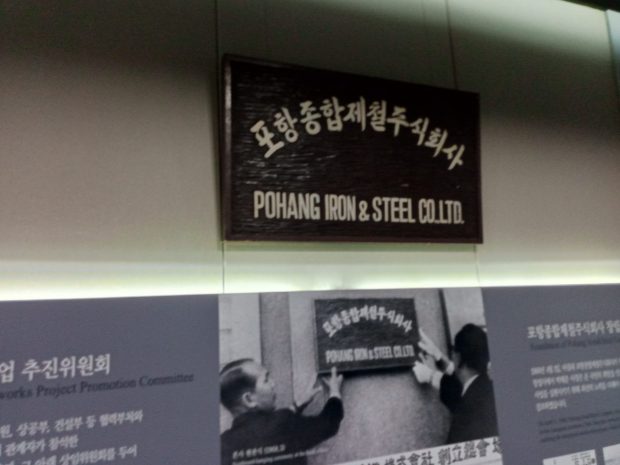
In 1968, Pohang Iron and Steel Company was founded and its construction commenced in 1970,” the guide told adding that the devotion of workers was behind the successful completion of country’s first steel mill. “The workers even gave up enjoying their weekly off days to make the project a success.”
We learnt that in 2002, the company’s name was changed to POSCO after its privatization process was completed. The POSCO museum was opened in 2003.
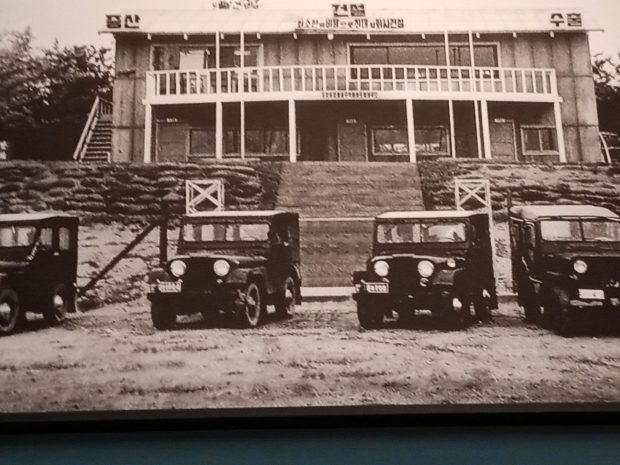
Construction of the Korea’s first steel works at Pohang was funded by money received from Japan. This funding was part of a compensation payment received from Japan for its colonial rule of Korea. Until the privatization in 1988, the ownership of POSCO was held by the Ministry of Finance and the government-owned Korea Development Bank.
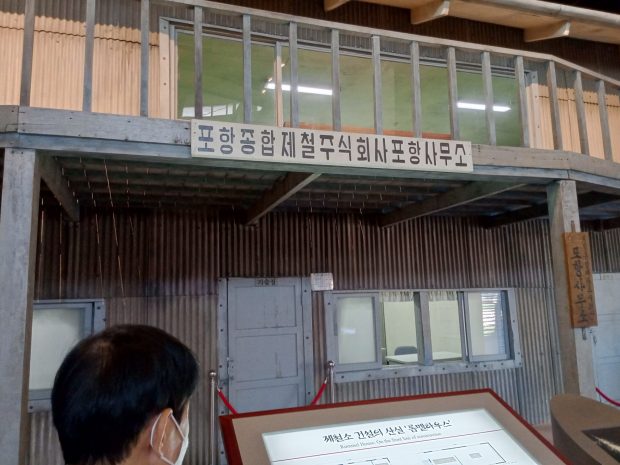
In one of the sections, a quote of one of the founders of Steel Mill, was showcased, which impressed me a lot. It read: Resources are limited, but the creativity is unlimited.”Pohang- POSCO-History Museum – Sindh Courier-14In one of the sections, a quote of one of the founders of Steel Mill, was showcased, which impressed me a lot. It read: Resources are limited, but the creativity is unlimited.”
At the POSCO Museum, visitors can learn more about the history of iron and POSCO as a company, stories of employees through media technology and artworks by well-known national and foreign artists. There is also a rooftop garden, where everyone is invited to enjoy the view of Pohang Steelworks.
Another artwork on display at the POSCO Museum is the ‘Non-object, Pole,’ a work by Anish Kapoor, a modern art master in England. The smooth surface in the form of an hourglass reflects visitors and the surrounding environment tri-dimensionality, creating the illusion that space is expanding infinitely. The reflection, distortion, and transition of the current image reflected on the artwork is a spiritual and essential approach to the other side of reality, giving guests a moment to experience the artists’ world.
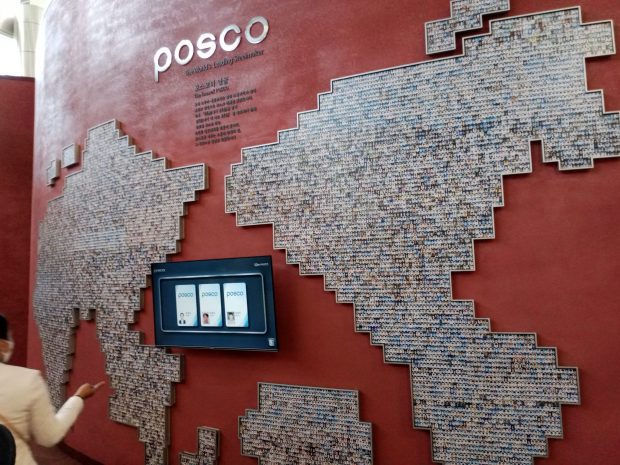
Moving on to the POSCO Hall of Honor, guests take the Sky Bridge, a 234m long high-line trail overlooking POSCO Steelworks and the surrounding nature. One of the highlights of this path is that it embodies a wind corridor that injects air used to set a fire to a furnace. The 14m high observatory has a glass floor, providing an exhilarating experience for visitors.
Last but not least, once arriving at the POSCO Hall of Honor, guests can learn more about thousands of the people who have contributed to the company’s development. Besides, thousands of workers, currently working in the POSCO can be traced with their location of work just by pointing at anyone of the photo and pushing at electronic button.
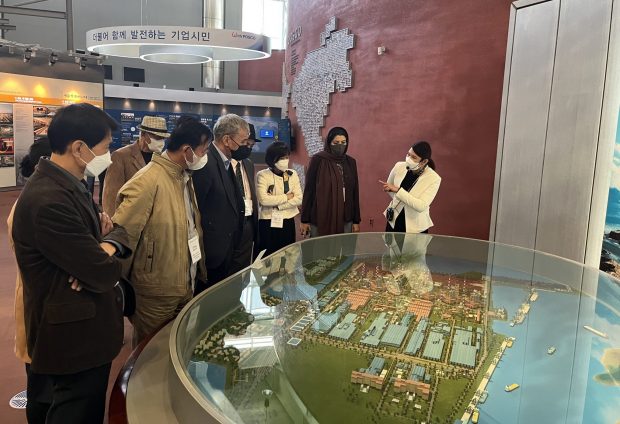
POSCO, which paved the way for Korea´s economic growth by nurturing the top steel company under the slogan, “make steel, serve the country,” had opened the POSCO Museum also to promote arts and culture under the slogan, “foster culture, serve the country.”
The POSCO History Museum tour was followed by delicious lunch, hosted by Mr. Park Doeun, Business Cooperation Vice President, at company’s club, surrounded by lush green lawns and trees in the Pohang city.
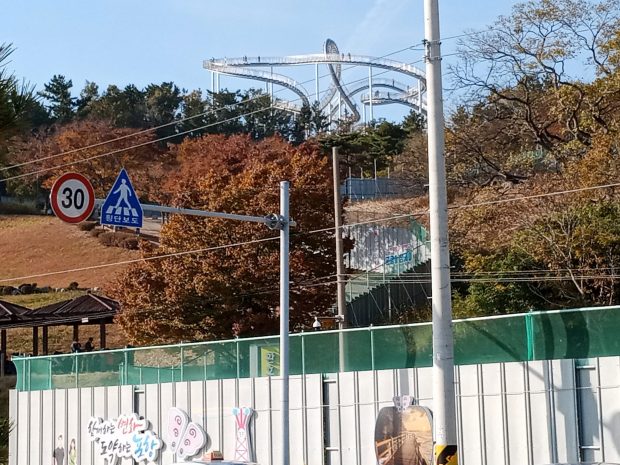
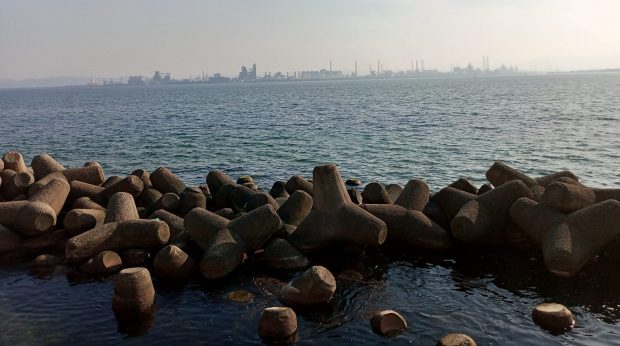
Soon after the lunch we proceeded to Korea’s largest walkable art installation named Space Walk located on a hill near the coast. This 25 meter high structure was built by installing grade beams connecting concrete foundations that support the structure under the ground and adding 114 micro piles supporting 85 tons each. From a far, Space Walk resembles a roller coaster and conjures up the image of high speed. “When visitors slowly walk the tracks, they experience the connection between their body and the space,” Mr. Park Doeun told.
“The graceful curves created through steel and the light that shines in the night sky represent Pohang, a city of steel and light,” he said.
Mr. Park said, “The project was implemented through partnership of local communities and was aimed to transform Pohang into a tourist attraction and revitalize the local economy.”
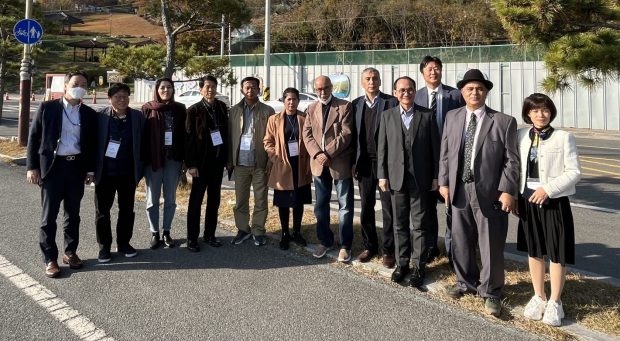
“The design of Space Walk was inspired by the light referred to in Pohang’s myth about the Sun, Moon and Steel that serves as the driving force of Korea’s economic development and revolves around the concept of ‘Song of Light and Steel’ and ‘Walking slowly through the Sky and Art’.
The 333-meter curved steel track stands in the city’s Hwanho Park, and the Pohang steel mill, Youngil Bay and Youngildae Beach can be seen while walking on it. Space Walk was opened in November last year, and nearly 210, 000 people visited it in just three months, we were told.
Being short of time and were scheduled to leave for Daegu, another city on the way back to Seoul, we just had a look at Space Walk, and said Good Bye to our hosts.


